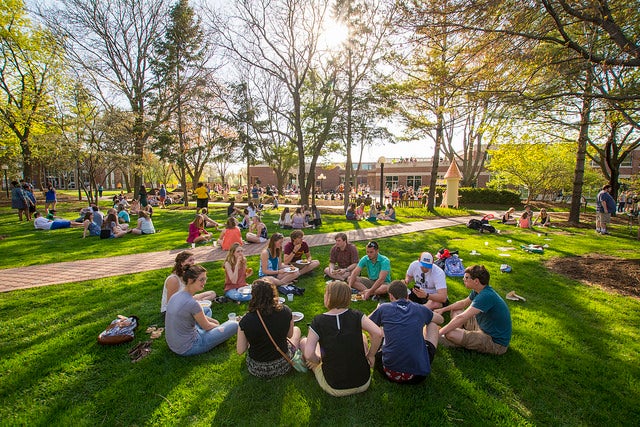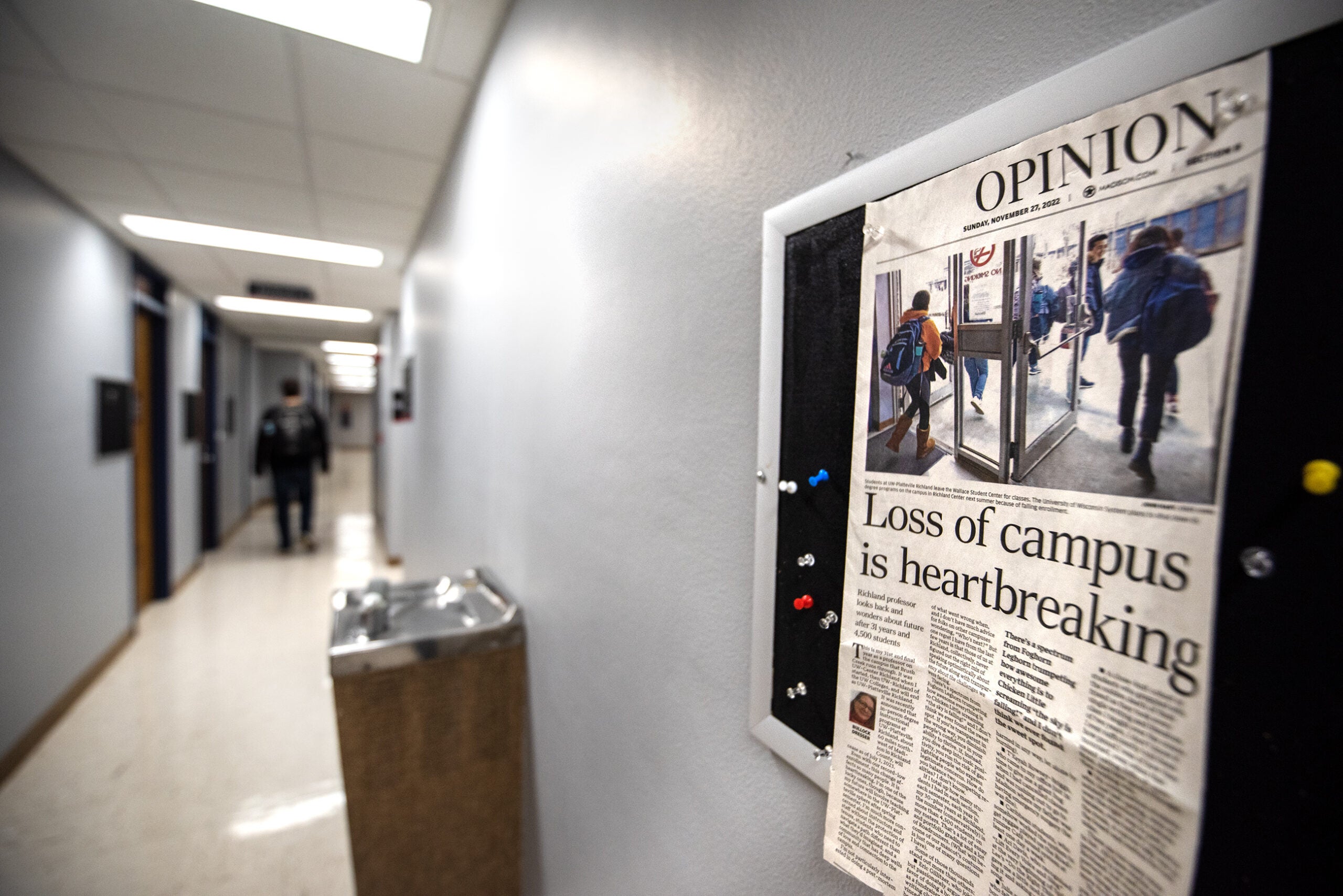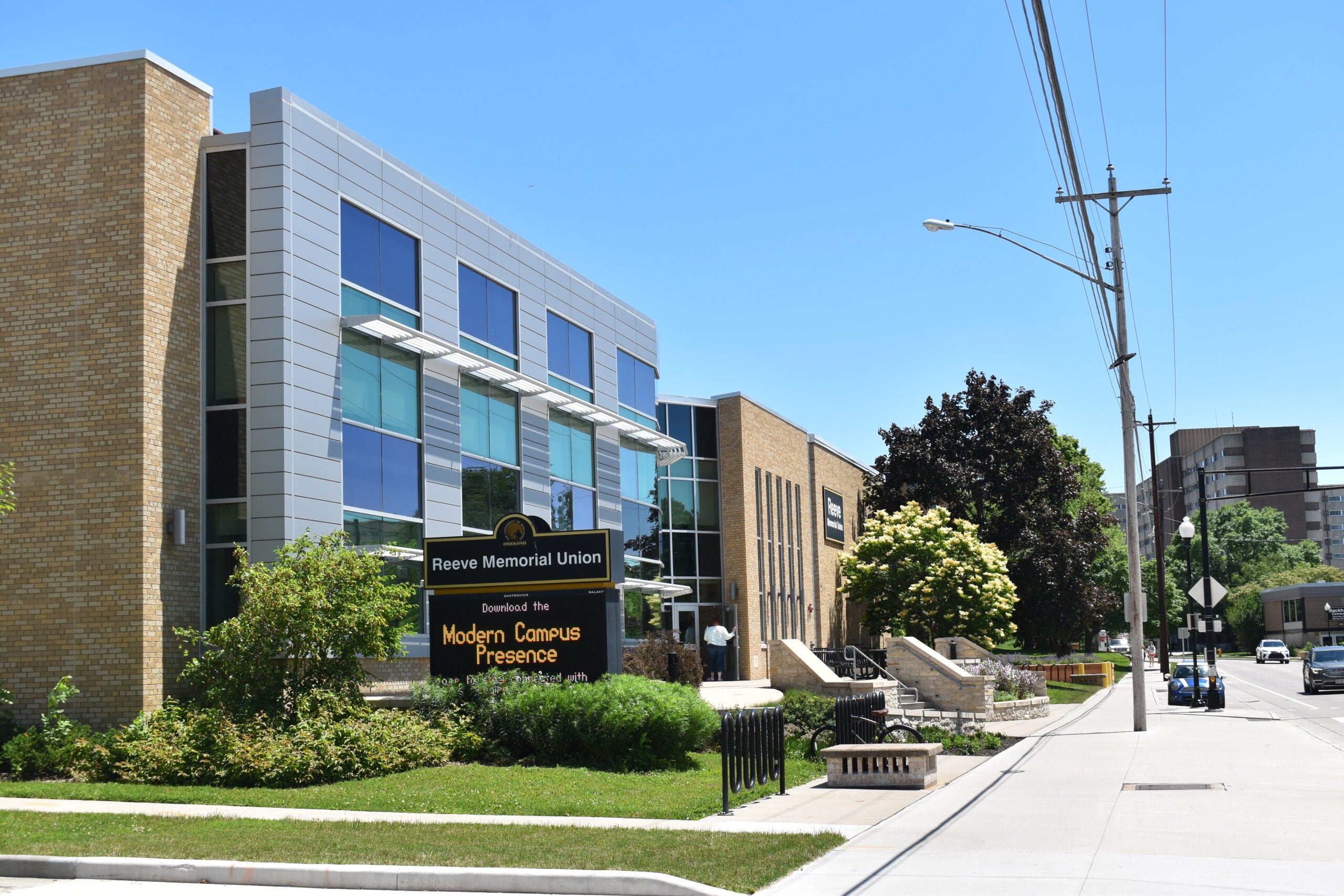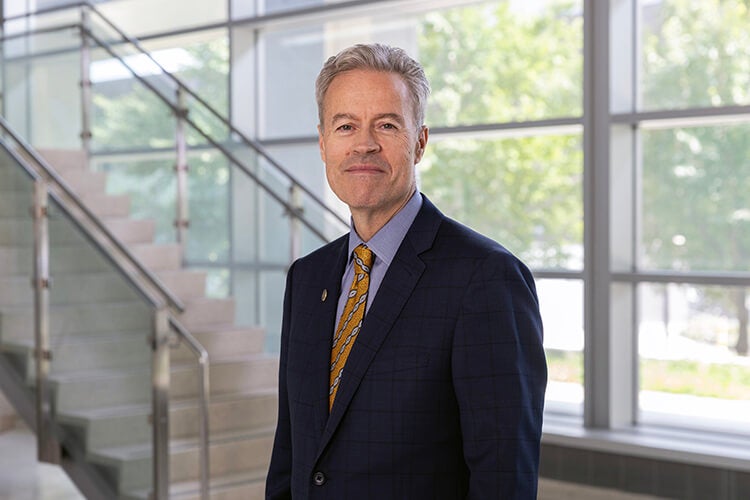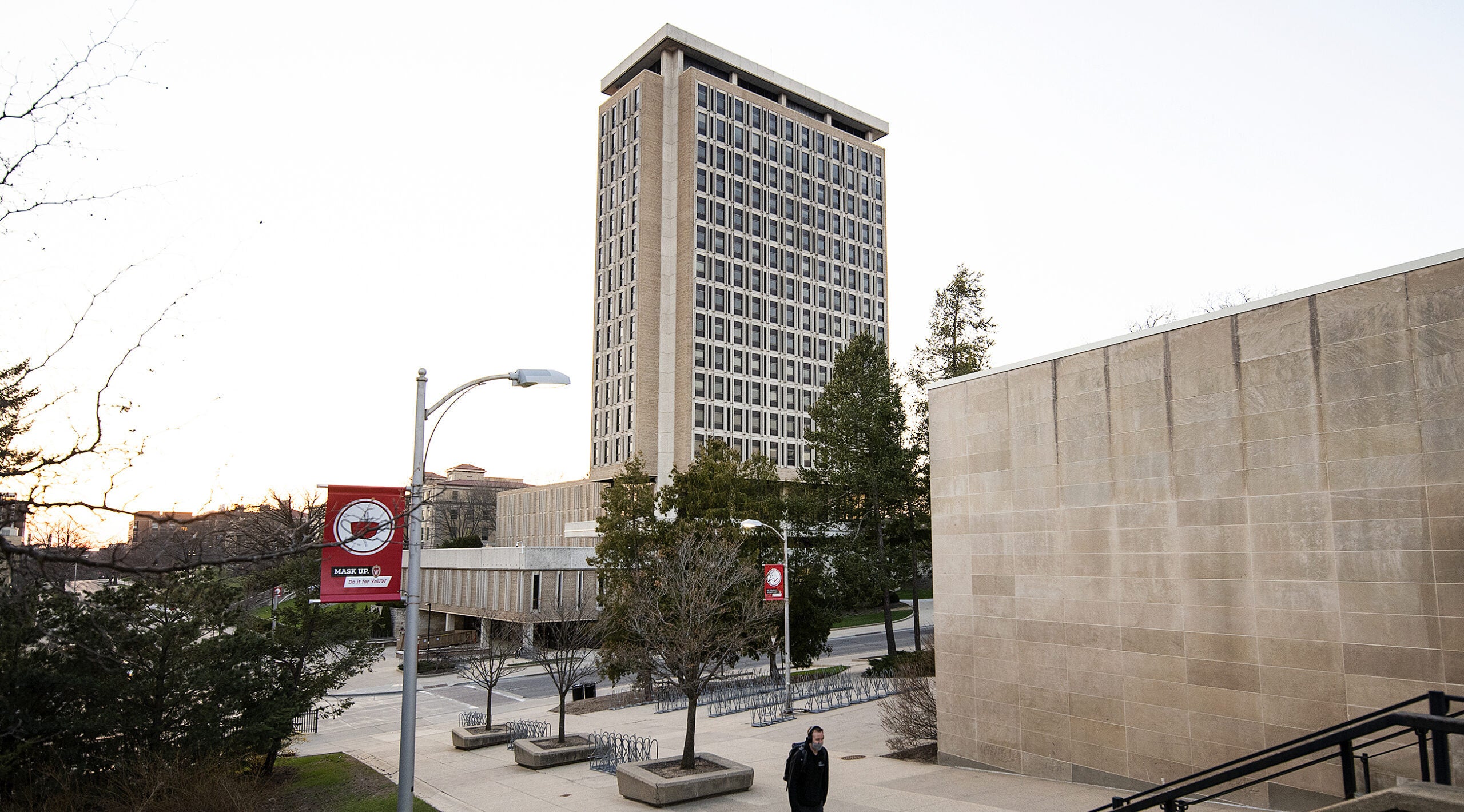As University of Wisconsin leadership consider consolidating two-year and four-year colleges, some education experts say the change follows a trend among higher education programs.
Last week, UW System President Ray Cross proposed making two-year campuses satellite programs of the system’s four-year universities.
Cross cited declining enrollment at two-year campuses and a leveling off of the state’s college-age population as reasons for the change.
News with a little more humanity
WPR’s “Wisconsin Today” newsletter keeps you connected to the state you love without feeling overwhelmed. No paywall. No agenda. No corporate filter.
Susan Heegaard, an education consultant from Minnesota, said Wisconsin is not alone in re-evaluating their higher education system. Especially as state funding becomes more scarce.
“States and systems have a limited number of levers that they can use when they’re trying to affect change,” Heegaard said.
Heegaard said the proposal is similar to Minnesota’s decision to merge community colleges and technical schools in the early 1990s.
“They’re still a system and things are moving forward,” Heegaard said.
But Heegaard and other experts argue the real issue is attracting a higher percent of the young people that already reside in Wisconsin.
“Because of the dropping enrollment in two-year colleges, (the UW System is) trying to make it a little bit more attractive by saying from two-year college you can easily transfer to the four-year college, for example,” said Abdur Chowdhury, an economist from Marquette University.
Heegaard said there are also community benefits to making higher education more accessible.
“Even if your population is flat in your state or declines, you can certainly take a look at whether students are getting into their program of study and getting out, how long that’s taking, what that’s costing them. And there’s an individual sort of aspect as well as a taxpayer aspect,” Heegaard said.
Heegaard said decreasing the portion of the state’s labor force with high student debt or an unfinished degree can help address the need for skilled workers.
Wisconsin Public Radio, © Copyright 2026, Board of Regents of the University of Wisconsin System and Wisconsin Educational Communications Board.

